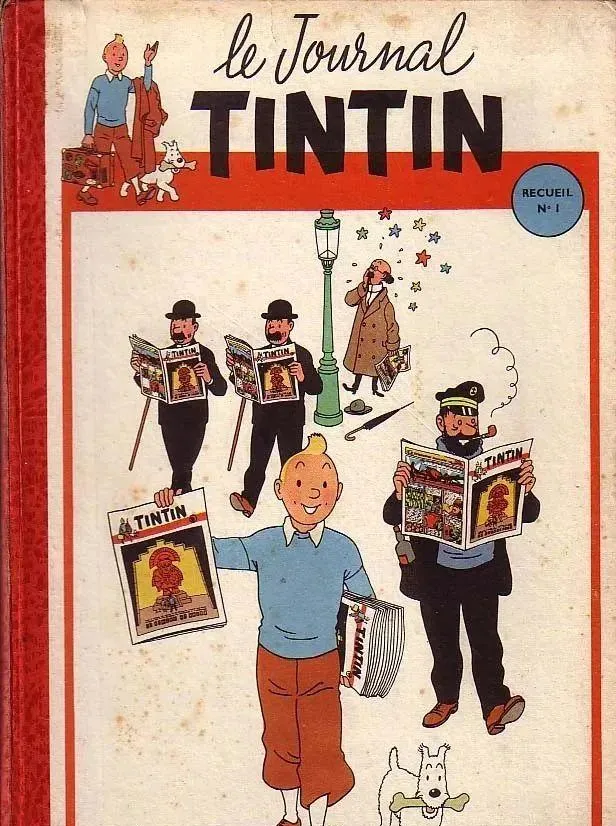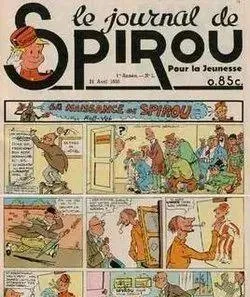什么是Bande Dessinée?
「Bande dessinée」意为「法语漫画」。比利时和法国人所说的「bande dessinée」或「BD」与世界上任何其他类型的漫画都大不相同。它不同于西方漫画、日本漫画和美国超级英雄漫画,而是拥有它自己的表达方式,而100多年的历史早已让它成为比利时文化的一部分。
自文艺复兴时期以来,视觉艺术就在比利时文化中占有重要地位,例如众所周知的比利时画家:布勒哲尔(Brueghel)、扬·凡·艾克(Van Eyck)、鲁本斯(Rubens)……几个世纪后的50 年代,布鲁塞尔成为了当时全欧洲拥有最多电影院的城市。因此,法语国家所谓的「第九艺术」,即漫画在比利时的兴起绝非巧合!

一般来说,漫画早在19 世纪早期就有记载,但是漫画创作和出版最多的黄金时代是在一百多年之后。下面就让我们一起来了解比利时漫画的历史吧。
What people in Belgium and France call a 「bande dessinée」 or 「BD」 is very different from any other types of comic found in the world. It is unlike the far eastern manga, manhwa or manhua or the American superheroes comics. It is its own way of storeytelling, and in more than a 100 years of existence, it has become part of Belgium’s culture.
Visual arts have had a great cultural importance in Belgium since the Renaissance period with painters known to everyone: Brueghel, Van Eyck, Rubens… A few centuries later in the 1950s, Brussels was the city that had the most cinemas in all of Europe. As such, the rise of what francophone countries call the 「9th form of art」, or comics, in Belgium was not a coincidence!
Comics in general can be found as early as the early 19th century, but the golden era, during which the most comics were written and published, took place more than a hundred years later. Let us delve into the early history of Belgian comics.
比利时漫画的历史
HISTORY
PHASE1
1929年1月10日,「丁丁」首次在【二十世纪报】(Le Vingtième Siècle)的儿童周刊【小二十世纪报】(Le Petit Vingtième)上发布。这一时间点标志着比利时漫画的诞生。与我们现在经常看到的那些一次性发布的漫画不同,丁丁的故事是以连载的形式逐个发布的。发布后,「丁丁」大受欢迎,于是该周刊决定将这些故事以精装书的形式发行:1930 年,【丁丁在苏联】出版。「丁丁」的故事起初在日报上连载,直到 1946 年周刊 【丁丁报】(Le Journal de Tintin)创刊。

1934年8月2日「丁丁」在【小二十一世纪报】上
Tintin on Le Petit Vingtième on August 2nd in 1934
On 10 January 1929, Tintin is published for the first time in the 「Petit Vingtième」 a weekly supplement for children to the newspaper 「Le Vingtième Siècle」. This point in time effectively marks the birth of the Belgian comic. Stories were published part by part instead of all at once like we are used to nowadays. However, Tintin was so popular that the magazine decided to release the stories in hardcover book format as well: in 1930, Tintin au Pays des Soviets (Tintin in the Land of the Soviets) is published. The stories were first released in daily newspaper until the creation, in 1946, of the weekly magazine Le Journal de Tintin.
PHASE2
在第二次世界大战期间,【二十世纪报】停刊,迫使「丁丁」的作者埃尔热为他笔下小记者的冒险经历另寻发表基地。在 【晚讯报】(le Soir)短暂连载后,一家出版社将在 1946 年出版的名为【丁丁报】(Le Journal de Tintin)的新杂志中继续更新【丁丁历险记】。该杂志的副标题是「7至77岁年轻人适读杂志」,每周出版一直持续至1993年。

During the Second World War, the Vingtième Siècle is closed which forces Tintin’s author Hergé to look for another opportunity to publish the adventures of his reporter somewhere else. After a short stay at the le Soir (the Evening times), a publishing company will offer to continue The Adventures of Tintin in a new magazine, called Le Journal de Tintin in 1946. The magazine, subtitled "The Magazine for the Youth from 7 to 77", kept on publishing every week until 1993.
PHASE3
30年代,位于沙勒罗瓦附近马西内勒地区的著名出版商Jean Dupuis决定创办一本以新角色「斯皮鲁(Spirou)」为主角的青年杂志。

Back in the 1930s, Dupuis, a publisher based in Marcinelle near Charleroi which mainly publishes family magazines, decides to start a youth magazine centred around a new hero, 「Spirou」.
PHASE4
【丁丁报】(Le Journal de Tintin)和【斯皮鲁报】(Le Journal de Spirou)逐渐成熟,许多如今在比利时家喻户晓的系列漫画也是在这两本杂志上起步的,例如:【苏苏和维维历险记】(Suske en Wiske)、【幸运星卢克】(Lucky Luke)、【IQ零蛋多毛狗】(Cubitus)、【奥丁的诅咒】(Thorgal)等等……当时这两本杂志是友好的竞争对手;甚至理论上,正是由于这种良性的竞争促使漫画家能够产出更多更好的作品,让我们今天可以欣赏如此多的漫画。

The Journal de Tintin and Journal de Spirou will be the starting platforms for many other popular comic series that are now household names in Belgium: Suske en Wiske, Lucky Luke, Cubitus, Thorgal and much more… The two magazines were friendly rivals; it can even be theorized that it is this very competition that pushed each author to write better and write more, and gave us the many comics which we can enjoy today.
PHASE5
这两本期刊的主要区别之一在于显著的风格差异:虽然「斯皮鲁」有更多漫画人物的幽默故事(例如标志性的「大鼻子」),但丁丁在绘制现实主义画面时则更为严肃。另外有些漫画并不发表在期刊上,而是在其他地方出版,例如经典的荷兰语漫画【杰米历险记】(Jommeke),如今仍在荷兰主流报纸【新闻报】(Het Nieuwsblad)和【标准报】(De Standaard)上连载。

One main difference between the two journals was their significant style difference: While Spirou had more humoristic stories with caricatured characters (such as the signature 「big noses」), Tintin was more serious with relatively realistic drawings. Some comics didn’t belong to any of the journals and were published somewhere else, like the classic Dutch language comic 「Jommeke」 which is still published nowadays in mainstream Dutch language newspapers Het Nieuwsblad and De Standaard.
可能有人会说比利时漫画的黄金时代已经过去,但实际上比利时仍有源源不断的新漫画,如今仍有许多孩子在阅读【斯皮鲁】杂志!
但是不要误会哦:比利时漫画不仅仅是专供儿童阅读的。正如丁丁杂志的口号所说——是为 7 到 77 岁的年轻人而准备的。比利时漫画适合每个人,就像蓝精灵一样拥有多层故事。比利时漫画很受欢迎的另一个原因在于:对于儿童来说其中的幽默很容易理解,但对成年人来说就没那么容易了。比利时漫画制作精良,每一个故事围绕的主题并不受年龄或文化的限制。最重要的是,这些角色都很可爱,以一种古怪而又非常比利时的方式感染着每一位读者。
Some might say that the golden age of the Belgian comic has passed, but new comics are still being created and lots of kids still read the Spirou magazine nowadays!
Don’t misunderstand though: Belgian comics are not only for children. As the slogan of the Tintin magazine said, they’re for the youth from 7 to 77. Belgian comics are written for everyone, often containing several layers of stories like in the Smurfs. That is exactly why they are enjoyed by some many people: the humour is accessible for children but subtle enough to be interesting for adults. The stories are well-crafted and revolve around topics that are not restricted to an age or a culture. And most importantly, the characters are loveable, in their own quirky, very Belgian way.
近期其他文章推荐:
驻沪总领馆纪念俄对乌发动侵略战争两周年举办非正式聚会 Informal Gathering to Support Ukraine
我们为什么要将新馆的庭院以天宝命名?Why did we name our courtyard after TianBao?
下周开幕!到皇家美术博物馆来一次超现实主义之旅吧!Catch "Imagine!" in Brussels!
她从盖世太保的枪口下救了近百名比利时人 Qian Xiuling Hall: Why Do We Commemorate Her
比利时驻华大使馆
微信号|比利时驻华大使馆
新浪微博|比利时驻华使馆
网站|china.diplomatie.belgium.be • www.belgium24.eu











